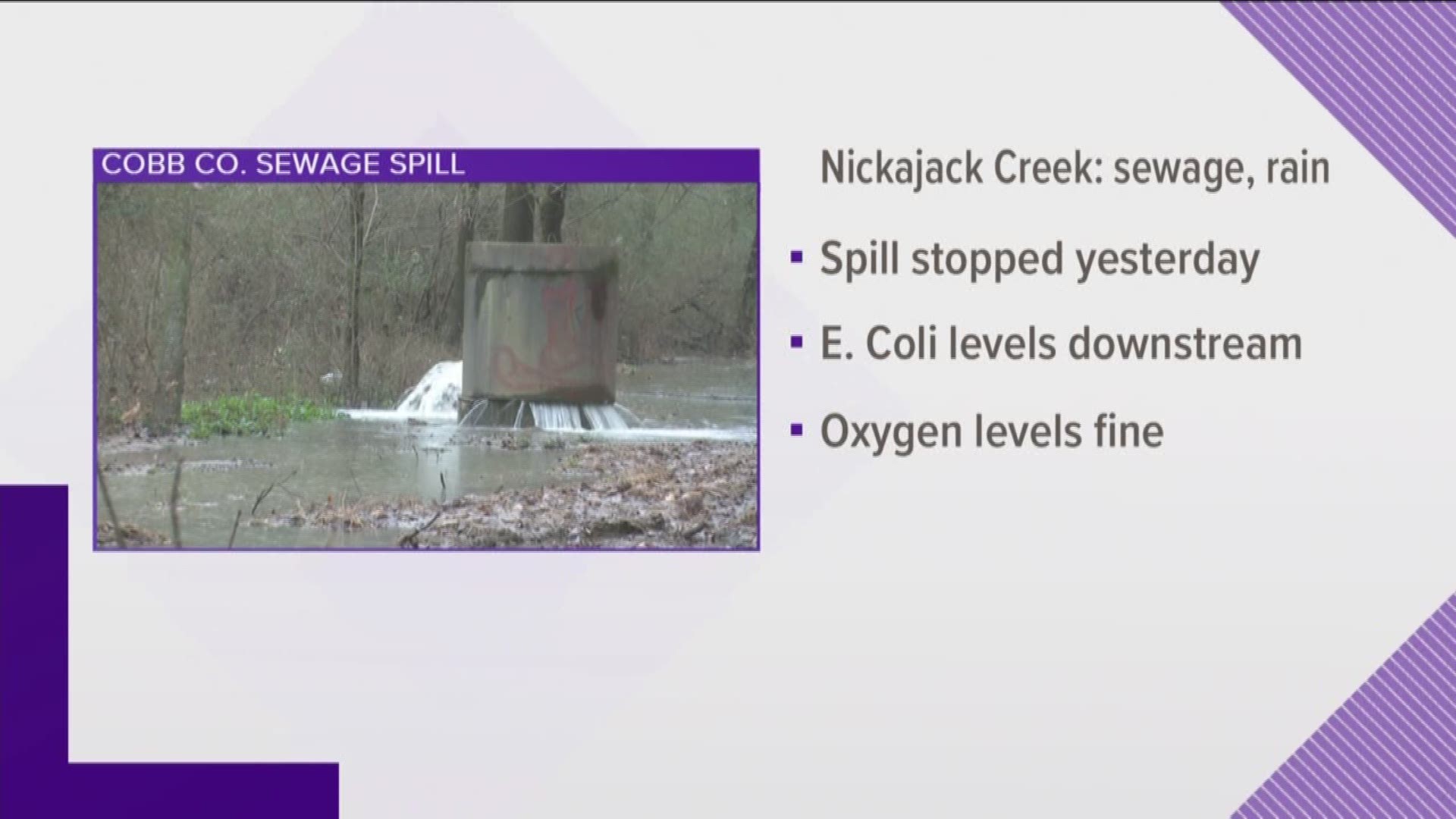High levels of E.coli, poor maintenance found at Pikeville wastewater plant – Local 3 News

Report on Pikeville Wastewater Treatment Plant Violations and Implications for Sustainable Development Goals
Introduction
The City of Pikeville’s wastewater treatment plant is under review by the Tennessee Department of Environment and Conservation (TDEC) following the issuance of a notice of violation on July 8. A routine inspection revealed multiple operational failures and the discharge of inadequately treated effluent into the Sequatchie River. These findings represent significant challenges to the city’s commitment to several United Nations Sustainable Development Goals (SDGs), particularly those concerning public health, clean water, and environmental protection.
TDEC Inspection Findings
The TDEC report identified critical deficiencies in both the chemical composition of the plant’s effluent and the physical state of its infrastructure.
Effluent Quality Violations
- High E. coli Bacteria Levels: Samples contained 2,419.6 units per 100ml, far exceeding the maximum permissible limit of 941, indicating a severe failure in sanitation processes.
- Low Dissolved Oxygen: Depleted oxygen levels in the discharged water threaten aquatic life.
- High Ammonia Nitrogen Rate: Elevated ammonia levels are toxic to fish and contribute to nutrient pollution.
- High Residual Chlorine Levels: Excessive chlorine in treated water is harmful to the receiving ecosystem.
Operational and Infrastructure Deficiencies
- Floating solids were observed in all treatment units.
- Clarifier units were found to be inoperable.
- Aeration units displayed abnormal coloration, suggesting process failures.
- The final effluent was cloudy and contained visible “sludge blankets.”
- A log jam in the Sequatchie River downstream from the outfall was noted to be obstructing water flow, potentially causing an accumulation of pollutants.
Impact on Sustainable Development Goals (SDGs)
The operational failures at the Pikeville facility directly contravene the principles of several key SDGs.
- SDG 6: Clean Water and Sanitation: The primary violation is the failure to ensure the availability and sustainable management of water and sanitation. The discharge of inadequately treated wastewater, contaminated with E. coli and other pollutants, directly undermines Target 6.3, which aims to improve water quality by reducing pollution and halving the proportion of untreated wastewater.
- SDG 3: Good Health and Well-being: The release of dangerous levels of E. coli into a public waterway poses a direct risk to human health, conflicting with Target 3.9 to substantially reduce illnesses from water pollution. Concerns raised by local residents about the safety of their families and livestock highlight this immediate public health threat.
- SDG 14: Life Below Water: The discharge of effluent with low dissolved oxygen, high ammonia, and high chlorine levels severely degrades the aquatic habitat of the Sequatchie River. This is in direct opposition to Target 14.1, which calls for the prevention and significant reduction of pollution of all kinds in marine and inland water bodies.
- SDG 11: Sustainable Cities and Communities: The malfunctioning plant signifies a failure in essential municipal infrastructure, impacting the environmental sustainability of the community. This situation is contrary to Target 11.6, which focuses on reducing the adverse per capita environmental impact of cities, including through effective waste management.
- SDG 15: Life on Land: The pollution of the Sequatchie River threatens the surrounding terrestrial and freshwater ecosystems that depend on it, including local agricultural activities, thereby conflicting with the objectives of Target 15.1 regarding the conservation and restoration of inland freshwater ecosystems.
Official Response and Required Actions
Communication and accountability have been identified as key issues. Pikeville Mayor Philip Cagle stated he was not contacted about the state’s testing until after it was complete. In contrast, local resident Michelle Bilbrey expressed concern over the lack of communication from the city regarding the potential risks. The plant operator, Justin Thomas, has indicated that river testing will commence on July 16.
The TDEC has mandated the following course of action:
- The City of Pikeville must submit a formal written response to the TDEC.
- This response must detail a comprehensive plan of corrective actions to address all identified violations.
- The deadline for submission of this corrective action plan is August 8.
Analysis of Sustainable Development Goals in the Article
1. Which SDGs are addressed or connected to the issues highlighted in the article?
- SDG 3: Good Health and Well-being: The article highlights the presence of “dangerous levels of E. coli bacteria” in treated wastewater, which poses a significant risk to human health for anyone who comes into contact with the contaminated river water.
- SDG 6: Clean Water and Sanitation: This is the most central SDG to the article. The entire issue revolves around the failure of the City of Pikeville’s wastewater treatment plant to adequately treat sewage, leading to the pollution of the Sequatchie River.
- SDG 11: Sustainable Cities and Communities: The problem is a failure of municipal infrastructure and waste management within the “City of Pikeville,” directly impacting the city’s environmental performance and the well-being of its residents.
- SDG 14: Life Below Water: The discharge of improperly treated effluent, containing pollutants like high ammonia nitrogen and low dissolved oxygen, directly harms the aquatic ecosystem of the Sequatchie River.
- SDG 16: Peace, Justice and Strong Institutions: The article describes the role of a government institution, the TN Department of Environment and Conservation (TDEC), in monitoring environmental compliance and holding the local city government accountable through a “notice of violation.”
2. What specific targets under those SDGs can be identified based on the article’s content?
- Target 3.9: “By 2030, substantially reduce the number of deaths and illnesses from hazardous chemicals and air, water and soil pollution and contamination.” The article’s mention of “dangerous levels of E. coli bacteria,” “high ammonia nitrogen rate,” and “high residual chlorine levels” directly relates to water contamination that can cause illness.
- Target 6.3: “By 2030, improve water quality by reducing pollution, eliminating dumping and minimizing release of hazardous chemicals and materials, halving the proportion of untreated wastewater…” The Pikeville plant’s failure, evidenced by numerous violations including high E.coli and floating solids, demonstrates a failure to meet this target by releasing poorly treated wastewater.
- Target 11.6: “By 2030, reduce the adverse per capita environmental impact of cities, including by paying special attention to air quality and municipal and other waste management.” The malfunctioning wastewater treatment plant is a clear example of inadequate municipal waste management leading to a negative environmental impact.
- Target 14.1: “By 2030, prevent and significantly reduce marine pollution of all kinds, in particular from land-based activities, including marine debris and nutrient pollution.” The release of effluent with a “high ammonia nitrogen rate” and “floating solids” into the Sequatchie River is a land-based activity causing nutrient pollution and debris in a freshwater ecosystem.
- Target 16.6: “Develop effective, accountable and transparent institutions at all levels.” The action of TDEC sending a “notice of violation” and requiring the Mayor to submit a “written response… detailing what corrective actions will be implemented” is a direct example of an accountability mechanism between different levels of government institutions.
3. Are there any indicators mentioned or implied in the article that can be used to measure progress towards the identified targets?
- Water Quality Measurements: The article provides specific quantitative data that serve as direct indicators of water quality. These include:
- E. coli bacteria levels: “2,419.6 per 100ml / above 941 max”
- Dissolved oxygen levels: Mentioned as “low”
- Ammonia nitrogen rate: Mentioned as “high”
- Residual chlorine levels: Mentioned as “high”
- Visual Observations of Pollution: The report notes several qualitative indicators of pollution and system failure, such as “floating solids were observed in every treatment unit,” “effluent appeared cloudy with visible ‘sludge blankets’,” and a “log jam in the Sequatchie River downstream from the outfall was obstructing water flow.” These relate to the proportion of wastewater being safely treated (Indicator 6.3.1) and ambient water quality (Indicator 6.3.2).
- Institutional Accountability Actions: The issuance of a “notice of violation” by TDEC and the mandated “written response” from the Mayor are indicators of regulatory enforcement and institutional accountability in action, relevant to Target 16.6.
4. Summary Table of SDGs, Targets, and Indicators
| SDGs | Targets | Indicators |
|---|---|---|
| SDG 3: Good Health and Well-being | 3.9: Reduce illnesses from water pollution and contamination. | Presence of “dangerous levels of E. coli bacteria” and “high residual chlorine levels” in wastewater effluent. |
| SDG 6: Clean Water and Sanitation | 6.3: Improve water quality by reducing pollution and increasing the proportion of safely treated wastewater. | Specific measurements of pollutants (E. coli at 2,419.6/100ml); low dissolved oxygen; high ammonia; cloudy effluent with “sludge blankets.” |
| SDG 11: Sustainable Cities and Communities | 11.6: Reduce the adverse environmental impact of cities through improved municipal waste management. | The failure of the city’s wastewater treatment plant, evidenced by inoperable clarifiers and numerous effluent violations. |
| SDG 14: Life Below Water | 14.1: Prevent and reduce pollution from land-based activities, including nutrient pollution. | Discharge of effluent with a “high ammonia nitrogen rate” (nutrient pollution) and “floating solids” into the Sequatchie River. |
| SDG 16: Peace, Justice and Strong Institutions | 16.6: Develop effective, accountable, and transparent institutions. | Issuance of a “notice of violation” by TDEC; requirement for the Mayor to submit a “written response” detailing “corrective actions.” |
Source: local3news.com

What is Your Reaction?
 Like
0
Like
0
 Dislike
0
Dislike
0
 Love
0
Love
0
 Funny
0
Funny
0
 Angry
0
Angry
0
 Sad
0
Sad
0
 Wow
0
Wow
0












































































